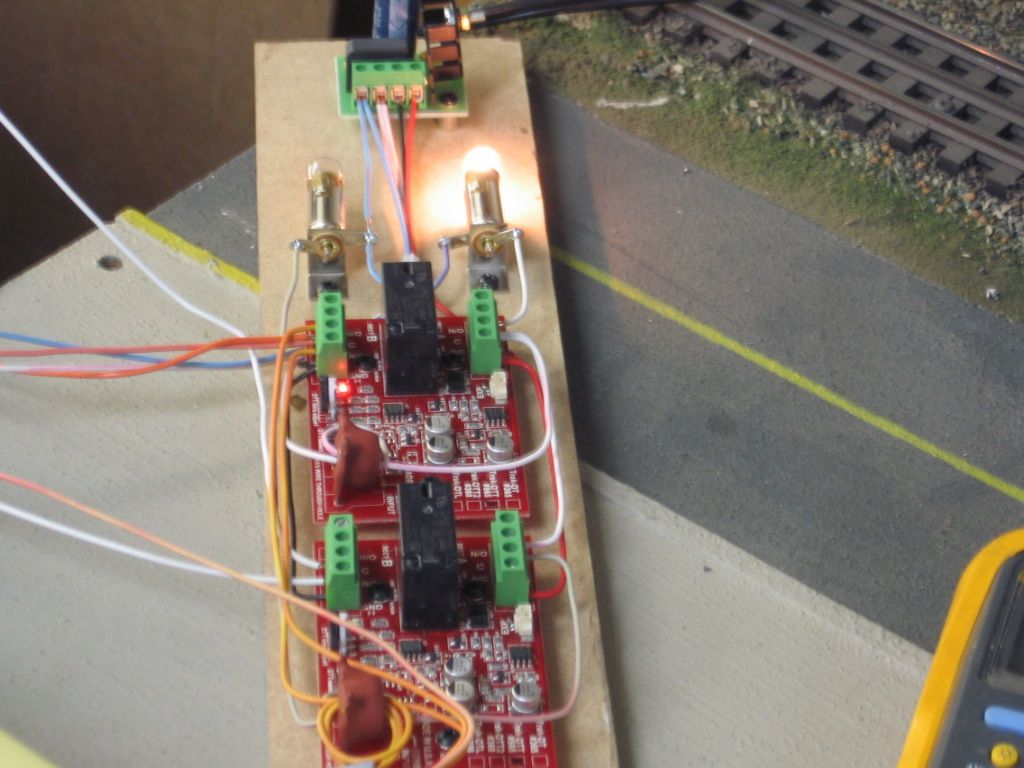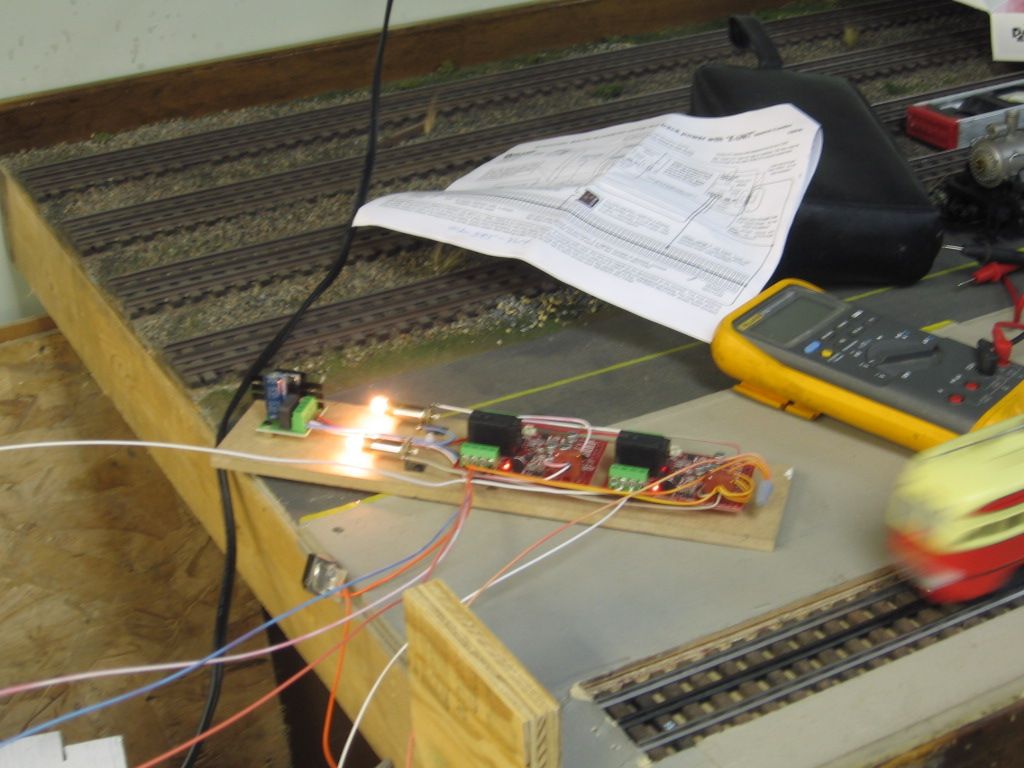I'm using the Dallee detectors in part to control movement at a 4 way trolley intersection. Does anyone know the minimum detection current to active the detector relays ? Thanks
Replies sorted oldest to newest
Did you ask Dallee? He's normally very responsive.
Steven J. Serenska
Yes he is, just call him.
FYI - Dallee says:
that depends on the frequency. They can sense 2 ma at the right frequency. If you need more sensitivity, then you just wrap the sense wire more times around the sense coil. If your operating by DCC, then that's not advisable to do since track ties and ballast create a current flow between the rails so you would be pulling the detection "on" with just stray ballast current instead of anything being in the block.
I'm using 60 Hz AC. I want to add a load to the detector sense wire which will keep the detector latched after the primary load is removed. I could start with 10 ma and see what happens.
I just added a 14v bulb in series with the wire.
This is for a Dallee Back and Forth trolley. The lamps were part of the assembly.


Thanks guys. My thoughts exactly. I'm going to add a lamp socket as a load allowing the change of lamps as the load adjustment.
shorling posted:...I want to add a load to the detector sense wire which will keep the detector latched after the primary load is removed. I could start with 10 ma and see what happens.
Seems to me if you add a 10mA load that's always there, the detector will be tripped all the time since it turns on a 2mA. Or is this 10mA load somehow turned on by the "primary load" being detected in the first place? And then how does the 10mA load disappear to shut-off the detector? Curious as to what you're trying to do.
I'm syncing trolleys with traffic lights. I have bump and go trolleys on short 4 way intersection superstreet runs. When a trolley crosses the intersection on a yellow light I want it to return and stop a the intersection. I have insulated superstreet roadbed at the intersection. Operation is as follows: trolley crosses the intersection on a yellow light, passes over the powered insulated section and onto the short mainline where it is detected. The yellow light enables the detector by enabling the sense circuit. The detection turns power off to the insulated section. The trolley bumps and returns to the now non-powered insulated section and stops. Not quite. As soon as the trolley exits the mainline the detector will restore power to the insulated section. I'm thinking a simple fix is to add a second load to the sense circuit using the second relay on the Trak-DT. When the trolley moves off the mainline, this added second load keeps the detector latched and power off the insulated section. When the light turns red the sense circuit is disabled and the latch releases, ready for the next cycle.
The back and forth Dallee system is design for a Forward/Neutral/Reverse trolley. The two boards pictured are timer boards in addition to the sensing. One timer/board determines the interval for the Forward/Neutral/Reverse "Sequence". The other timer/board determines the "Stop time", in this case, at the end of the track. Station stop, another product, does basically the same thing. We/Fort Pitt High Railers were able to get it to work in (8 ft.), 12 ft. required. Once set, clean tracks, and wheels, the trolley would run all day. We are currently on the second set of DT boards, it appeared that the timing variable resistors were not operating properly after several years.
Best wishes with your project
Mike CT. ![]()
Thanks for all your feedback. My bump and go trolleys consist of 3 short point to point superstreet lanes, two parallel and one crossing the two parallel. Thus, my 4 way intersection crosses 3 lanes with traffic lights. My intent is to create a trolley animation which is sync'd to the traffic lights. The trolleys cross the intersection without collisions and stop and go in coordination with the traffic lights. I have a solution, the question is how well will it work. The design is more rather than less in order to more easily tweek the design as issues are discovered. So far so good. The traffic lights are MTH with a third party's controller and custom interface. The animation is a superstreets approach to Lionel's full size Grand Central Station. One of my regrets is I wish I had the real estate to incorporate Harry Hieke's Grand Central platform.
FYI - Dallee suggests 100 ma Trak-DT holding current for 60 Hz sense.


